I don’t really intentionally collect old computers, I really don’t. However, when Bill Wahl called me up and said “Someone left an old computer here because they didn’t want to throw it away, and I thought you might want it. It says Osborne 1 on the side. Come and get it out of here.” Well, then I kind of had to make room, didn’t I?

Hmmn, it’s the first-generation tan plastic version with the brand stripes on the side. The leather handle is broken (heavy machine), but is quaintly old-fashioned, like a 1930’s typewriter case handle.

Very early serial number, A model, 16448 would probably place it in mid-1981, well before Osborne was pumping out 10k units a month (they hit that rate in Sept, 1981)
The Osborne 1 is an interesting machine, and the story of its creator and the machine’s meteoric rise and just as equally meteoric fall between 1981 and 1983 is a really fascinating read:
Osborne!
The machine, the man, and the dawn of the portable computing revolution.
The History of Computers: Osborne 1
Osborne 1 – 1981
By Osborne Computer Company
Long story short, The Osborne 1 was the first truly commercially successful “portable” computer. In a year that featured computers you had to be a skilled hobbyist to assemble and use, where your buying decision was a series of pricing the “main unit”, a monitor, disk drives and interface card, memory options and software sold separately, the Osborne 1 was a simple all-in-one system with a software package included that was worth the cost of the machine at retail. The Osborne 1 introduced the concept of bundled software and between 1981 and 1982 Osborne were rewarded with skyrocketing sales. Then, due to a series of historic blunders and the fast-fading popularity of the CP/M operating system in the face of the IBM/MS-DOS combination, the company cratered and filed for bankruptcy protection in 1983. Osborne then limped along, releasing poorly-selling new models until 1985, when they folded.
It’s a good thing there are two copies of the CP/M system disk, because one of them was warped, and didn’t work:
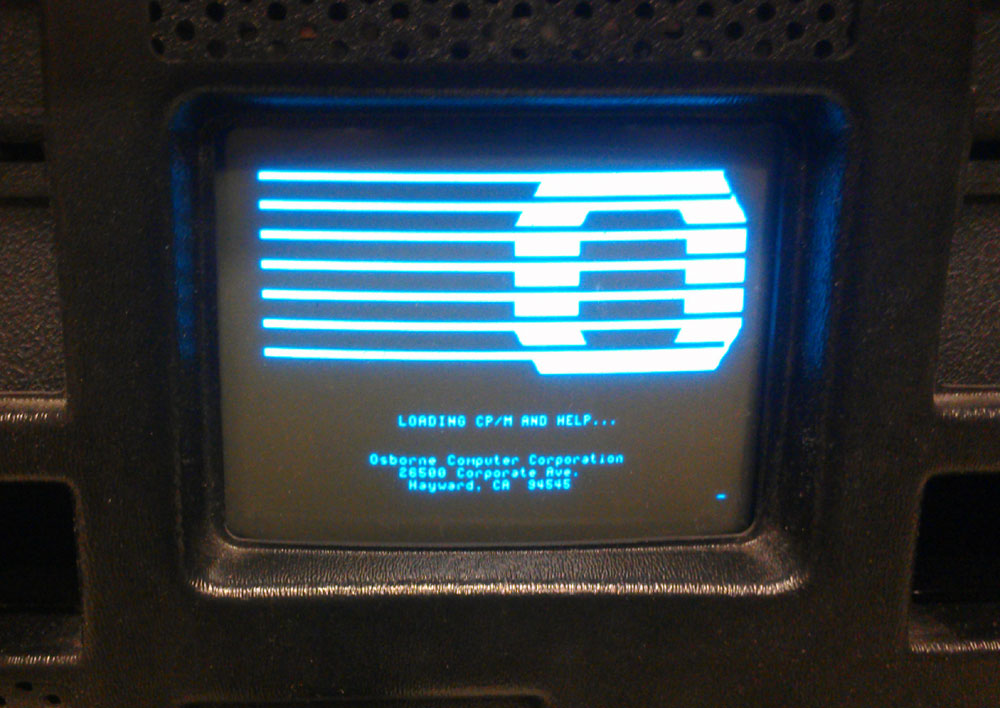
Ok, the other one works. Looks like the original owner ordered a second set from Osborne. There’s a folder full of receipts here tracking the sale of the machine through its two previous owners.

Ok, the system disk boots into a very neat little help screen. Hit a key and you get a page of helpful instructions on the topic listed.
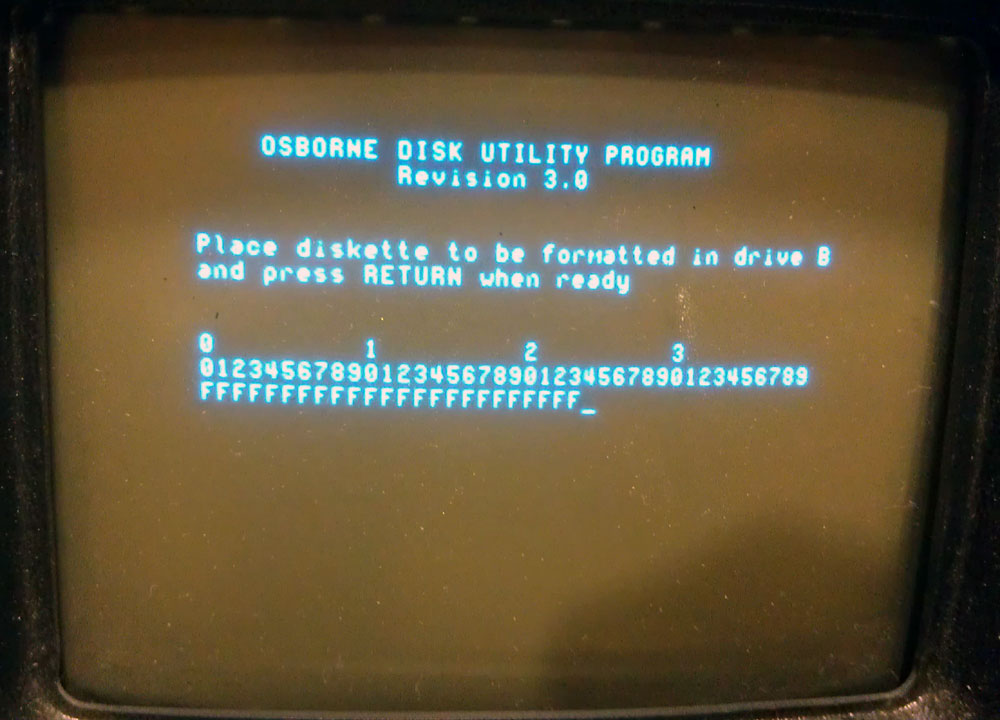
CP/M 2.2, where the “format” command is actually “copy”. But yay, the thing seems to format disks flawlessly! Not bad for a 34 year old computer.

Loads of paperwork. Every receipt you could hope for, and all the documentation included. I love it when people are good at keeping paperwork with a machine.
This particular Osborne 1 has been upgraded with the 1982-era video output port for the external screen. I’m guessing they updated the ROM image to the 1982 version at that time. The Wordstar Help mentions in several places using the <DEL> key to backspace over mistakes, but the machine itself has no <DEL> key. I’m wondering if that was a later improvement that the earliest machines lacked.
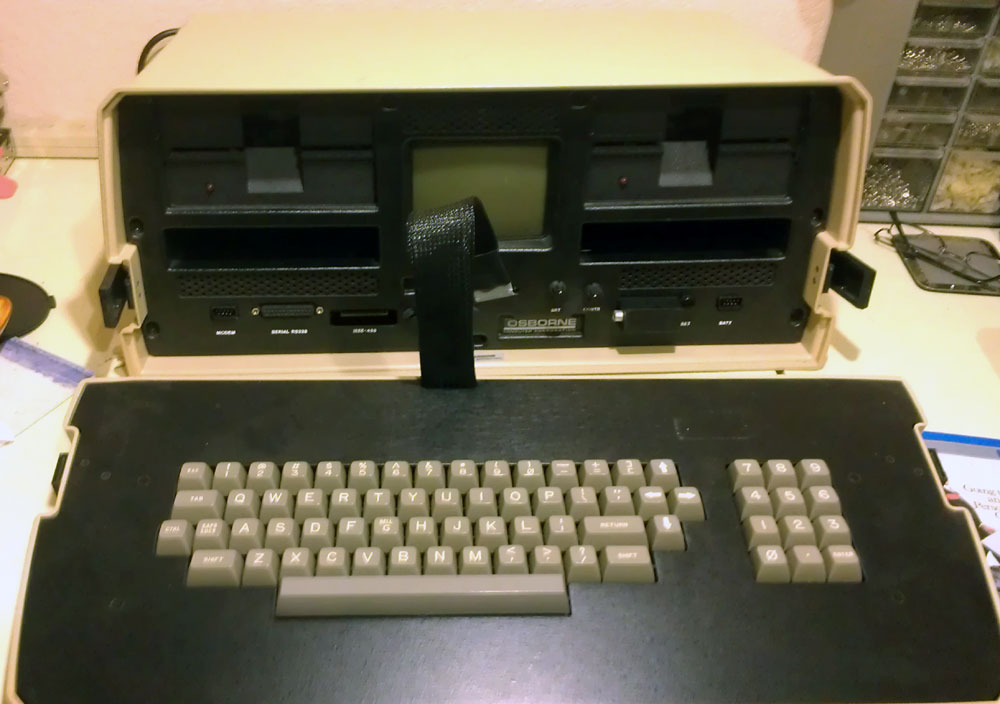
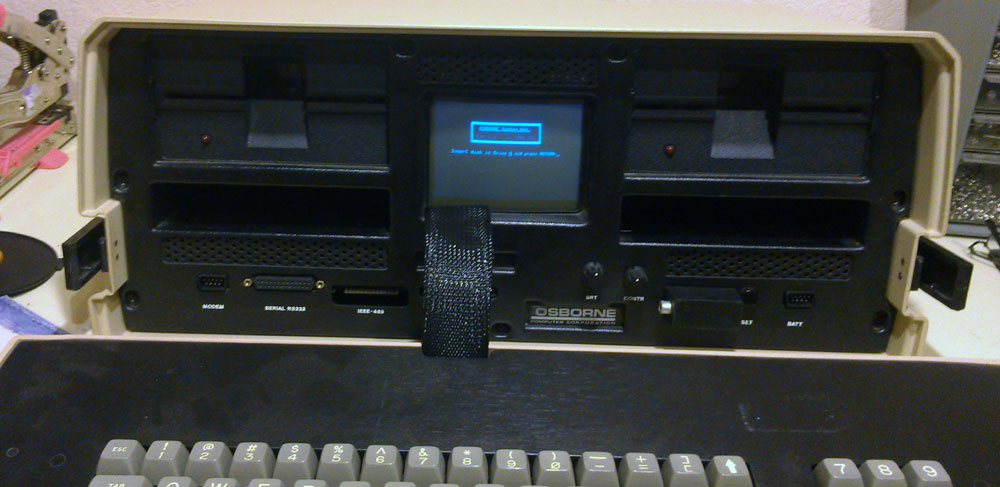
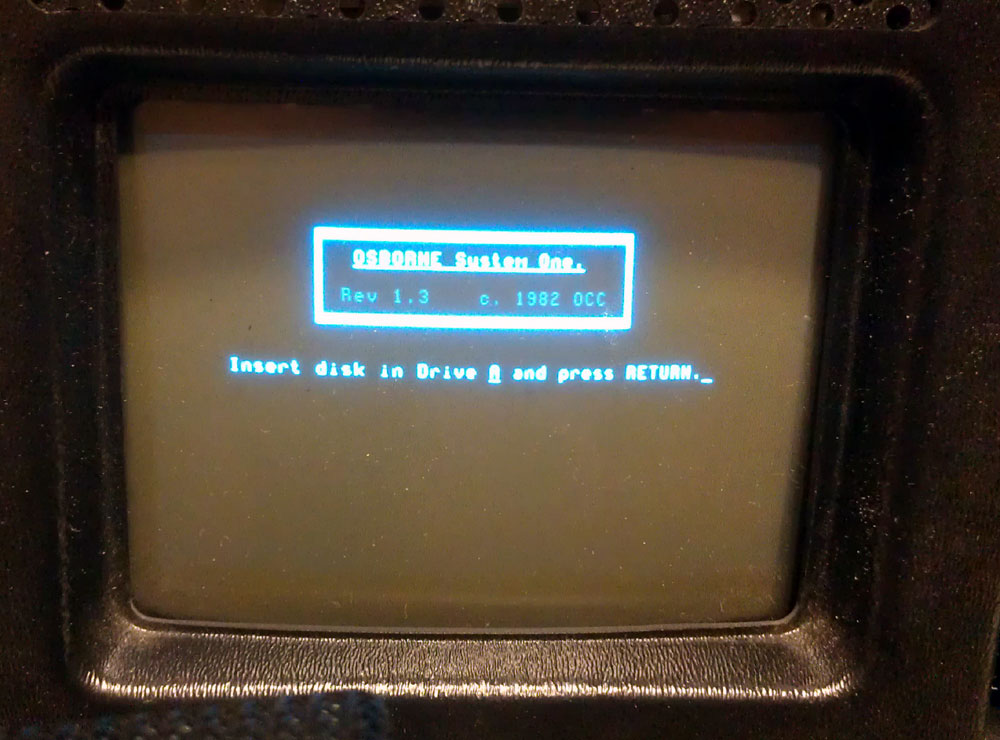
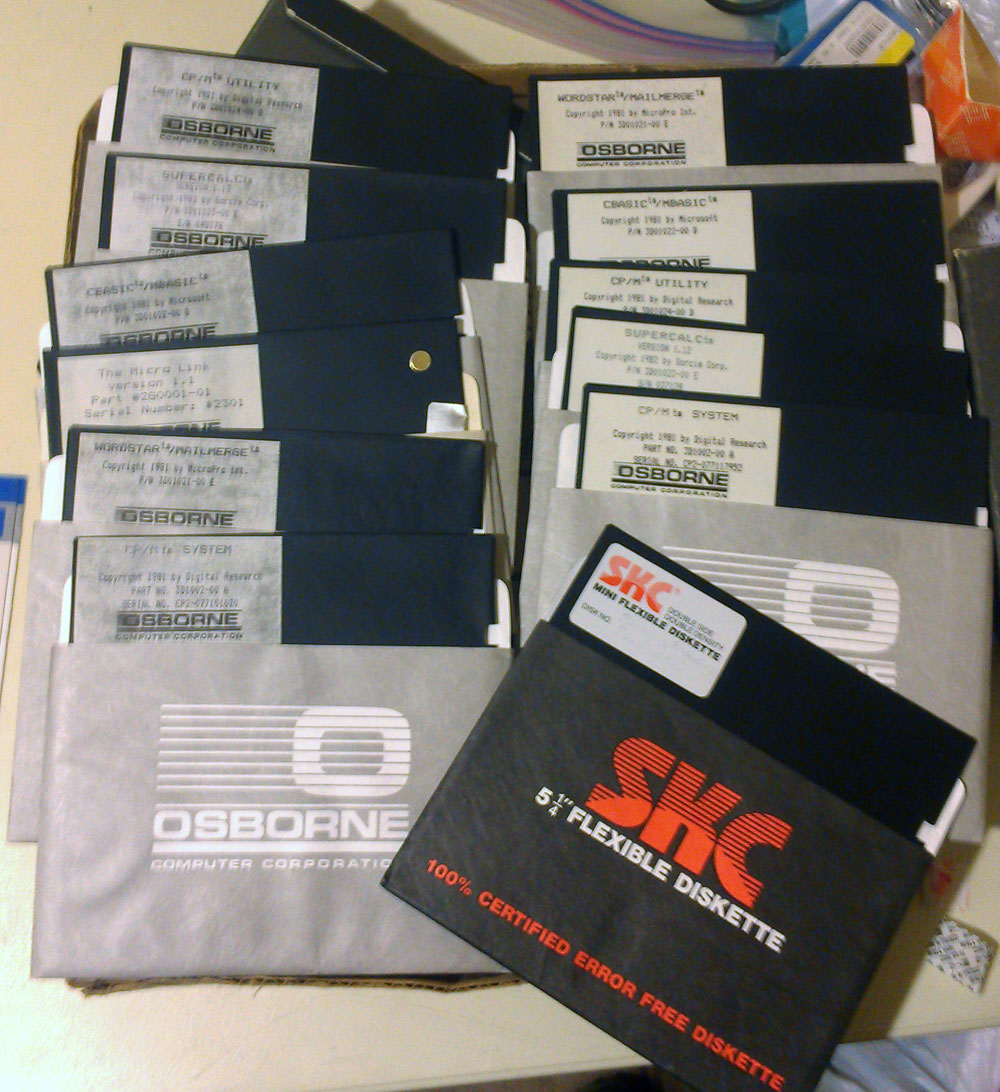

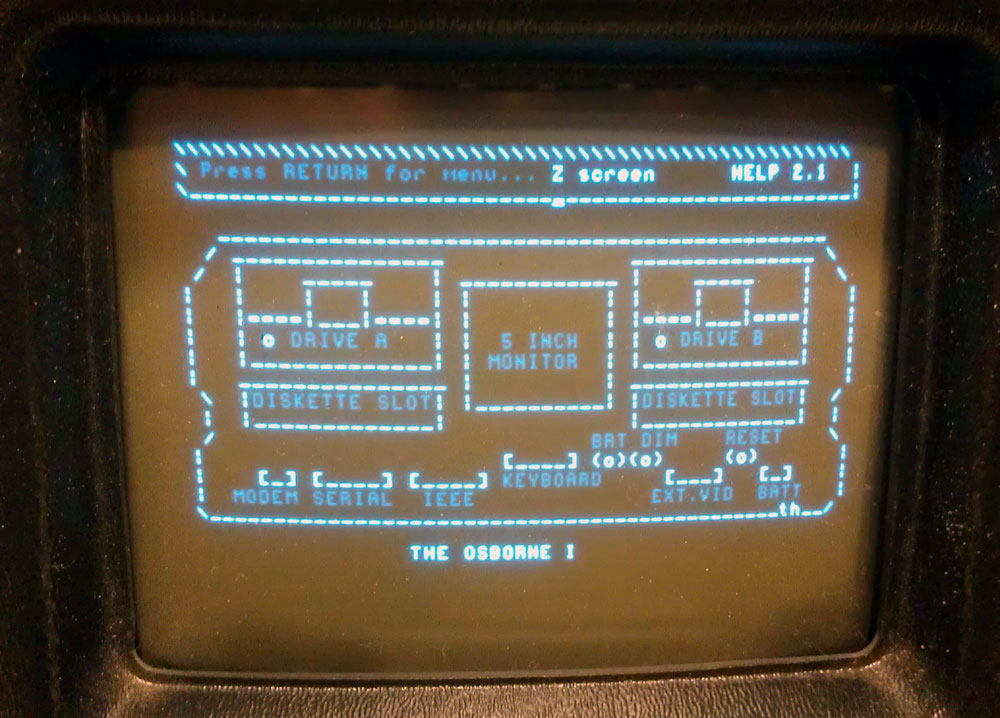
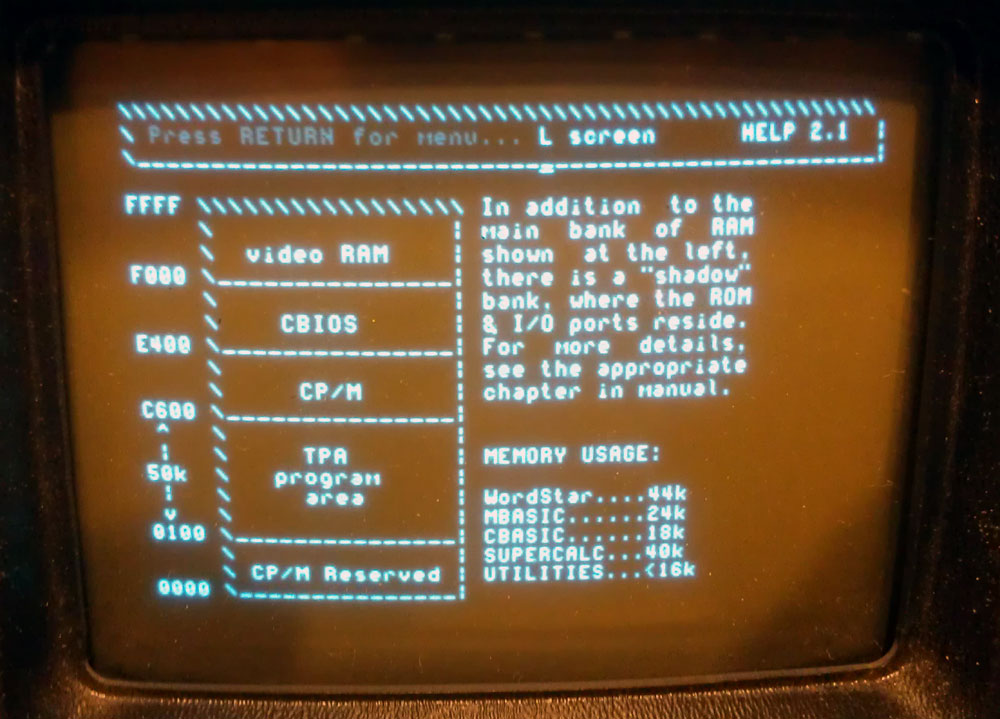
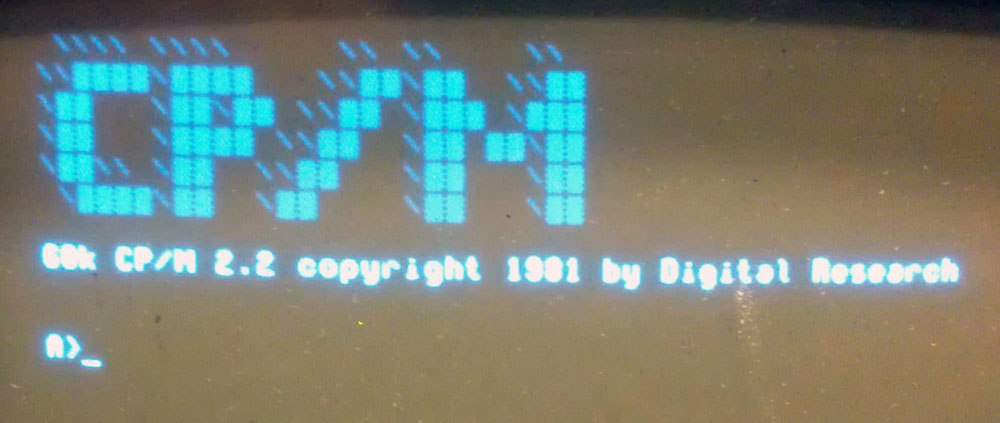
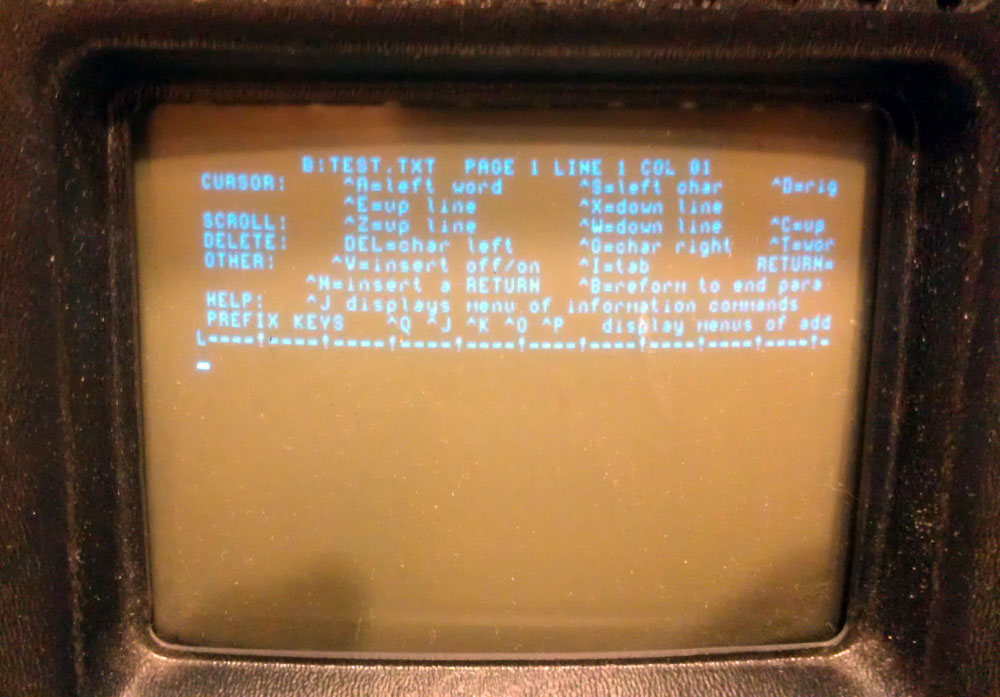
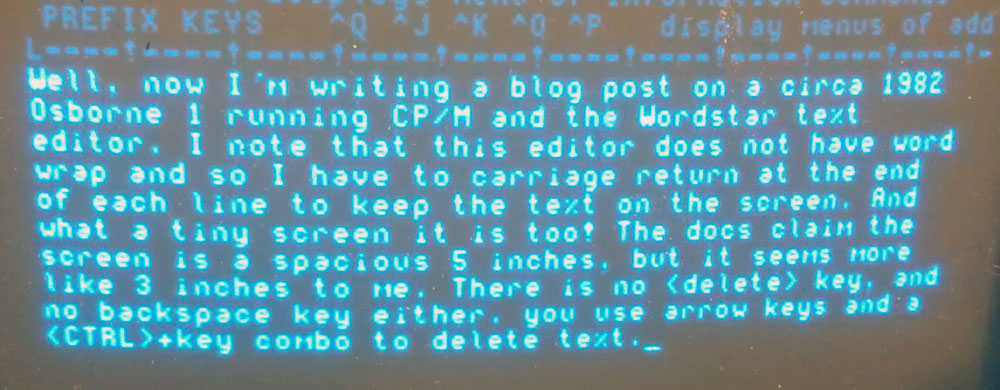
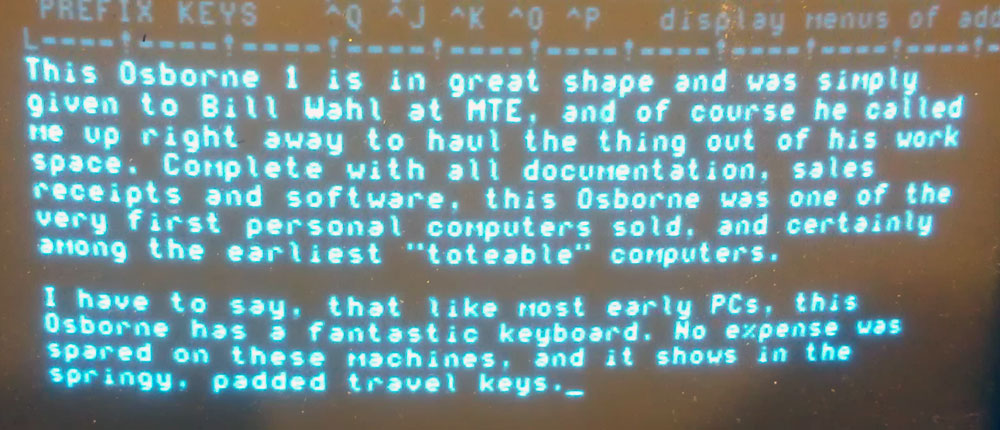
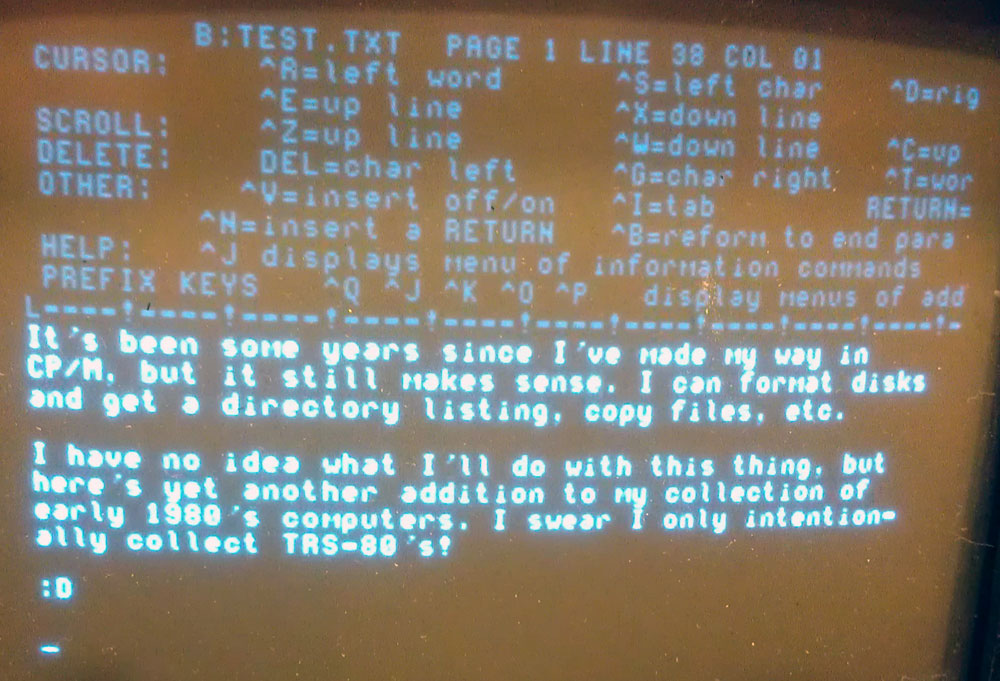


Nice! I had an Osborne 1 too, but it wasn’t working and had no disks either so I gave it to a friend who had some repurposing plans for it.
I didn’t mind, since I have a perfectly working Otrona Attache. After all, it’s size that matters and mine is smaller.
Sweet! Might I suggest some coffee shop Osborne-casting for your next blog article? Because nothing says retro tech better than hauling a suitcase-sized computer to Starbucks (or pick your local coffee shop of preference). That’ll shut the naysayers up who complain about public typing!
Such a fun read. The Osborne links sent me down the rabbit hole of paleocomputing (how did I get to the Altair 8800 Online Simulator page?). That tiny display screen on the Osborne beats the heck out of me – somehow people happily used the Osborne to create spreadsheets.
You know, you really just made do with the limitations. You have to remember that home computers that could actually do things were a very new and amazing thing then, and followed on the tail of several years of being indoctrinated by Star Wars into thinking we’d better learn computer programming if we were going to be driving Millenium Falcons. I very distinctly remember a 16-year-old me being very convinced that this would be an actual career path by the time I got out of college. With that kind of imagination and motivation, you make things work. :D
Congratulations on a fine acquisition, Reverend.
No one intentionally collects antique computers, but when the starting bid on that TI-99/4A at the auction goes down to One Dollar with no takers…
Or someone calls you and says “Take this….”
Agent T.W. Lee sends…
Oh very nice. An Osborne! There are some collectors out there, and this model is sometimes sought after. But it’s not all that spectacular a collector’s item. Great to see it lighting up though. Nice.
Don’t forget, TV’s and CRT’s are measured on the diagonal.
I’ve never really understood how these early operating systems differed from each other. You mentioned CP/M and MS/DOS, but what were the differences? How did those in turn differ from what Apple created? Word Star was the first word processing program I learned to use. I’ve long forgotten the various keystrokes, but once, long ago, I was pretty good at it. Thanks for your post.
Well, here’s some history:
https://www.howtogeek.com/718124/what-was-cpm-and-why-did-it-lose-to-ms-dos/